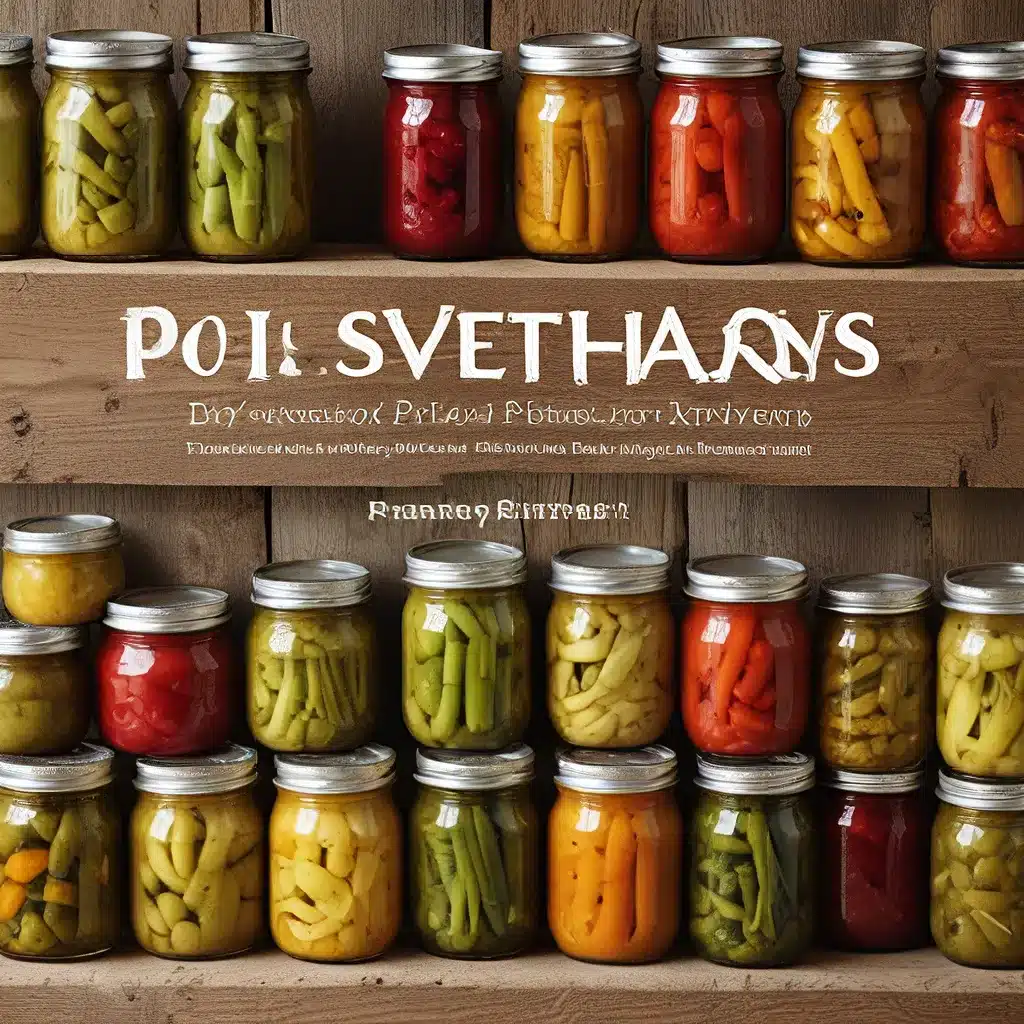
As the summer heat blazes on, our gardens are bursting with a bountiful harvest. From juicy tomatoes to crisp cucumbers, the seasonal produce is a true delight. But what if I told you that you could enjoy this fresh, flavorful goodness all year round? The secret lies in the age-old practices of canning and pickling.
Mastering the Art of Canning
Canning is a time-honored technique that allows us to preserve the peak freshness and flavor of our favorite fruits and veggies. It’s like capturing the essence of summer in a jar, ready to be savored when the cold winter winds blow.
Preparing to can might seem daunting at first, but trust me, it’s easier than you think. The key is to follow the proper steps and use the right equipment. Start by sterilizing your jars, lids, and other tools to ensure a safe, successful canning process.
Next, choose your produce. Tomatoes, green beans, peaches, and berries are all fantastic options for canning. Wash and prepare your ingredients according to the specific recipe you’re using. Then, it’s time to get canning!
The two main canning methods are water bath canning and pressure canning. Water bath canning is perfect for high-acid foods like pickles, jams, and fruit preserves. Pressure canning, on the other hand, is necessary for low-acid foods like meats, vegetables, and some fruits.
Invest in a quality canning kit to make the process a breeze. With the right tools and a bit of practice, you’ll be whipping up jars of homemade goodness in no time.
The Magic of Pickling
While canning preserves the natural flavors of your produce, pickling adds a tantalizing twist. Pickling is a fantastic way to extend the life of your harvest and create delicious, versatile condiments.
Pickling beets, garlic scapes, and even onions can transform them into flavorful, crunchy delights. The process is straightforward: simply submerge your veggies in a flavorful brine made with vinegar, spices, and a touch of sweetness.
Garlic scapes, in particular, are a hidden gem when it comes to pickling. These curly green stems, harvested from the garlic plant, are a rare treat. Pickled garlic scapes offer a mellow, garlicky flavor that pairs beautifully with sandwiches, salads, and cheese platters.
Harvesting and pickling garlic scapes is a rewarding experience. By tapping into local farms or even your own backyard garden, you can create a stash of these unique, flavor-packed pickles.
The best part about pickling? It’s endlessly customizable. Experiment with different spice blends, vinegar varieties, and even add-ins like dill or chili peppers to create your own signature pickles. The possibilities are endless, and the results are always delicious.
Preserving the Harvest, One Jar at a Time
Whether you’re canning, pickling, or a combination of both, the joy of preserving your harvest is unmatched. Not only do you get to enjoy the fruits (and veggies) of your labor all year round, but you also have the satisfaction of knowing exactly what’s in your food.
Canning and pickling are empowering skills that allow you to take control of your food supply and reduce your reliance on store-bought products. Plus, the process is surprisingly easy and surprisingly fun. Invite your friends and family to join in the canning and pickling party – it’s a great way to bond over shared interests and create lasting memories.
As the seasons change and the bounty of the garden fades, you can take comfort in the fact that your pantry is stocked with the flavors of summer. Pop open a jar of pickled beets or savor the sweetness of canned peaches – it’s like a little taste of the sun, even on the coldest winter day.
So, what are you waiting for? Grab your canning jars, your vinegar, and your favorite produce, and let’s get preserving! With a little bit of time and effort, you can enjoy the harvest long after the growing season has ended. Savor the flavors, nourish your body, and embrace the satisfaction of self-reliance.

